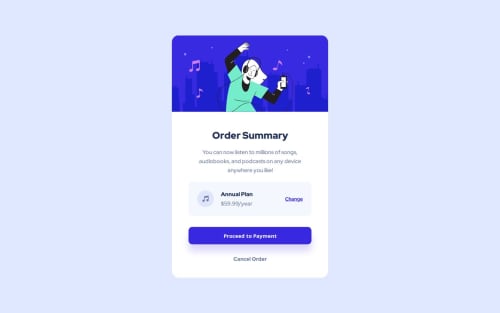Submitted almost 2 years agoA solution to the Order summary component challenge
Responsive Order Summary View
bem
@az0r234

Solution retrospective
I found it very difficult to make it responsive, if you have any suggestions/ideas on how I can write better and scalable css to make it responsive please provide it!
Code
Loading...
Please log in to post a comment
Log in with GitHubCommunity feedback
No feedback yet. Be the first to give feedback on Alok Acharya's solution.
Join our Discord community
Join thousands of Frontend Mentor community members taking the challenges, sharing resources, helping each other, and chatting about all things front-end!
Join our Discord